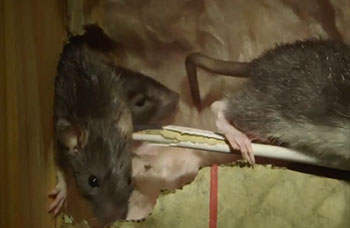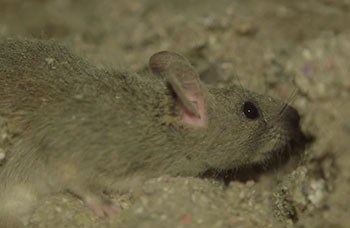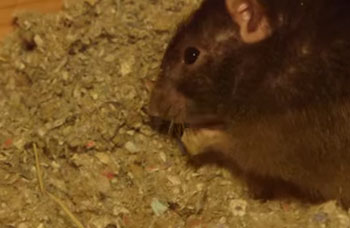Rat Types & Facts
Rat Facts
- Eat about 10 percent of their body weight every day.
- Can spread disease through biting or contact with their fecal matter or droppings.
Rat Photos
-
 Pack rat.
Pack rat. -
 Pack rat.
Pack rat. - View More Photos
What Are Rats?
Rodents are warm-blooded mammals that, like humans, can be found throughout the world. Rats live and thrive in a wide variety of climates and conditions and are often found in and around homes and other buildings, on farms, and in gardens and open fields. They have oversized front teeth for gnawing and check teeth, which are adapted for chewing. Rodents chew on a variety of items available to them and cause great damage in and around homes.
Rats will eat just about anything, but they prefer grains, meats and some fruits. Rats will eat about 10 percent of their body weight every day. Rats generally live about a year, but can live much longer in ideal conditions. They eat and contaminate food, damage structures and property, and transmit parasites and diseases to other animals and humans.
Rats, like Rats, are active mostly at night. They have poor eyesight, but they make up for this with their keen senses of hearing, smell, taste, and touch. Rats constantly explore and learn, memorizing the locations of pathways, obstacles, food and water, shelter, and features of their environment. They quickly detect and tend to avoid new objects and novel foods. Thus, they often avoid traps and baits for several days or more following their initial placement.
Rodent Identification
People don’t often see rodents, but signs of their presence are easy to detect. It’s important to know which species is present in order to choose an effective control strategy. Rodent activity can be seen by gnaw marks on food and objects such as utility lines. Other indicators can include rub marks or grease stains along surfaces which are produced as the rodent travels along an edge and the oils in their fur are deposited. Generally, darker stains indicate greater activity. Rodent droppings are another sign of activity and can be scattered along frequently traveled rodent pathways.
Norway rat (Rattus norvegicus)
One of the most common rats in the United States, the Norway rat is extremely adaptive and does well in a variety of human habitats including densely populated cities. Norway rats (also called brown or sewer rats) are large, burrowing rodents. They are bulky with coarse brown to grey fur with lighter underbellies. They are heavy-bodied and can weigh 1/2 to 1 pound. They can be 10 to 18 inches long. Head/bodies are 6 to 10 inches long; tails are shorter and can be 4 to 8 inches long. They have small eyes and ears and a blunt nose. Norway rat droppings are blunt capsule shaped and are about 3/4 inch long. Their fur is shaggy.
When Norway rats invade buildings, they usually live in basements, crawlspaces, and sewers. Outside, they can be found nesting in underground burrows typically found along building foundations, beneath rubbish or woodpiles, and in moist areas near tree roots. Norway rats can undermine building foundations and slabs with their burrowing activities. They can gnaw on all types of materials, including soft metals such as copper and lead, as well as plastic and wood. They require water to drink, and place their colony as close to a water source as possible. They have limited agility, but are excellent swimmers.
Roof rat (Rattus rattus)
One of the most common rats in the United States, Roof rats, also known as black rats, are generally smaller, sleeker, and slightly slimmer than Norway rats. Roof rats typically have light black to brown fur on their bodies with lighter underbellies. They are 7 to 10 inches long and have a long hairless tail. Unlike Norway rats, their tails are longer than their heads and bodies combined. They have large ears and eyes (typically larger than those of the Norway rat) and have a pointed nose. Their fur is smooth. Roof rat droppings are 1/2 inch with pointed ends, whereas Norway rat droppings are slightly larger (3/4 inch) and capsule shaped.
As their name indicates, roof rats prefer to nest high above the ground in trees, tall overgrown shrubs, or dense vegetation such as ivy. They often can be seen at night running along overhead utility lines or fence tops. These rats move faster than Norway rats, have an excellent sense of balance, and are very agile climbers. They often access homes by running along tree branches, cables or wires. They are typically found in attics, walls, false ceilings, and cabinets. Roof rats can cause considerable structural damage in homes with their gnawing and nest-building activities as they chew on wood and wires. Roof rats are especially fond of avocados and citrus, and they often eat fruit that is still on the tree.
House mouse (Mus musculus)
The house mouse thrives under a variety of conditions in and around homes. Mice are usually brown or light grey in color, with lighter underbellies but different species can be lighter or darker. They have pointed noses, small eyes, relatively large ears, and long tails. Most mice are 3 to 4 inches long. Droppings are rod-shaped and pointed on both ends. During the fall months when the temperatures outside begin to drop, the house mouse is often attracted by the warmth of your home as it looks for a place to spend the winter.
Once inside mice make their homes in quiet spaces out of spare materials, such as string and insulation. Indoors their diet consists of any spare food, consuming food meant for humans or pets, but in nature they typically eat grains, nuts, seeds, and sweets. Mice have keen senses of taste, hearing, smell and touch. They are excellent climbers and can run up any rough vertical surface. They contaminate food-preparation surfaces with their feces, which can contain the bacterium that causes food poisoning (salmonellosis). Their constant gnawing causes damage to structures and property.



